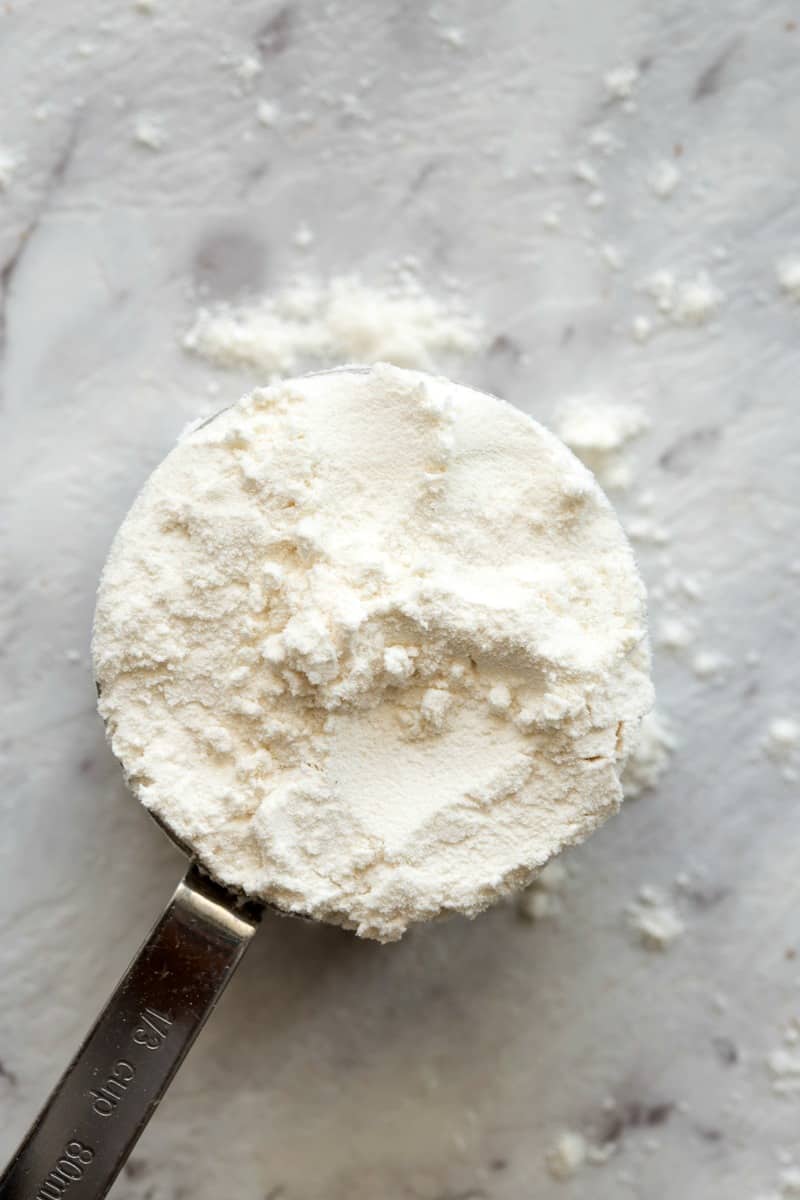Love making your own pantry staples? Learn how to make oat flour, coconut flour, and almond flour next. If there is a way for me to make my own baking staples at home, I’ll do it. As someone who works with lots of different flours, there’s something satisfying about making them myself. I never have to worry about running out or not being able to complete a recipe because of it. This time around, we’re making a truly essential kitchen staple: self-rising flour.
Why I love this recipe
Cheaper than store-bought. Self-raising flour is usually more expensive than all-purpose flour, but this recipe comes in at pennies on the dollar. Takes seconds to make. Mix everything together, and voila! It works with everything. You can use this for any recipe that calls for flour and baking powder, including quick breads, yeast breads, pastries, and more! You can make it in small batches. I’ll give you the ratio of ingredients so you can make as much or as little as you want.
Ingredients needed
All-purpose flour. The bulk of the recipe. Use regular white all-purpose flour or whole wheat. To make gluten-free self-rising flour, use gluten-free AP flour with xanthan gum added. Baking powder. The leavening agent. Avoid using baking soda instead as it requires extra ingredients in order to work (namely, cornstarch or cream of tartar). Fine salt. Adds flavor. If you can’t find fine salt, use kosher salt instead.
How to make self-rising flour
I’ve included step-by-step photos below to make this recipe easy to follow at home. For the full printable recipe instructions and ingredient quantities, scroll to the recipe card at the bottom of this post. Self-rising flour is a combination of white flour, baking powder, and salt. It’s often used in recipes without leavening agents (like baking powder or baking soda) and reduces the number of ingredients needed. Step 1- Combine ingredients. Combine all of the ingredients in a large mixing bowl and whisk to combine. Transfer to an airtight container and store for up to 6 months.
Arman’s tips
Make sure you completely mix the ingredients together. It’s super important to make sure the baking powder and salt are evenly distributed, which is why I use an extra-large bowl to mix. Make self-rising cake flour. Swap all-purpose flour for cake flour. Sift the flour, then spoon it into your measuring cup so you get accurate measurements.
Storage instructions
To store: Leftover flour should be stored at room temperature in an airtight container for up to 6 months. How do I convert plain flour to self raising? If you have all-purpose flour and want to make a small batch of self-rising flour, here’s a formula for getting it done: 1 cup homemade self-rising flour = 1 cup all-purpose flour + 2 teaspoons baking powder + 1/16 teaspoon salt. How do I substitute self-raising flour for plain flour? If you want to use self-rising flour but your recipe calls for plain flour, make sure the recipe calls for at least ½ tsp of baking powder per cup of flour. If it does, use equal portions of self-rising flour and omit the baking powder in the recipe.
My favorite recipes using self-rising flour
2 ingredient biscuits Donut holes Lemon ricotta pancakes 4-ingredient banana muffins Or any of my 2-ingredient magic dough recipes
Originally published April 2022, updated and republished May 2024

